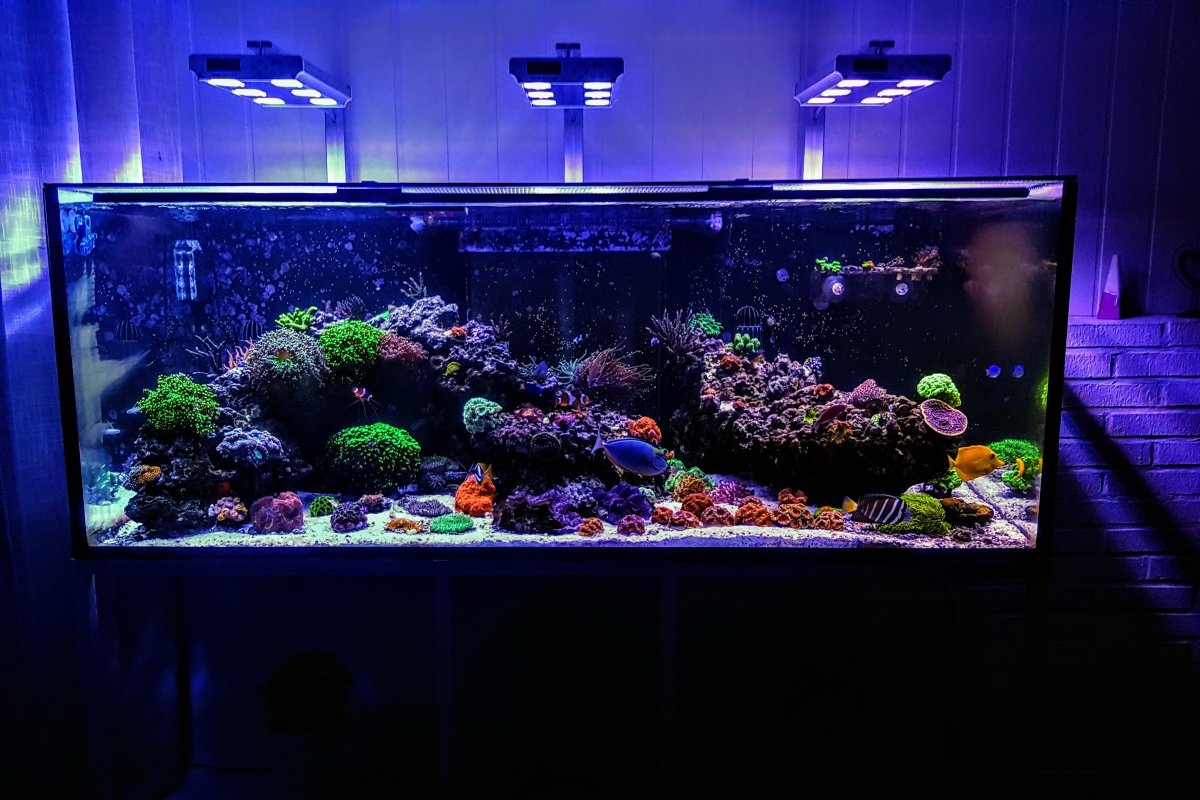Saltwater aquariums that brim with life and color could be a beautiful feature for any home. But, these marine ecosystems require dedication and expertise to ensure their continued success.
An ideal saltwater aquarium depends on regular water changes. They eliminate waste and replenish minerals like alkalinity carbonate, calcium and magnesium.
It is important to disinfect any water you collect from outside sources. Also, you’ll need to monitor important parameters like ammonia, pH and nitrite/nitrate every week.
Installation of the Aquarium Saltwater Aquarium
Saltwater aquariums are an excellent option to maintain marine life in a secure and beautiful surroundings. They can also be incredibly exciting. It is also more expensive and requires more time to keep as compared to freshwater aquariums. Before you get started with an aquarium with saltwater, ensure that you are ready to devote yourself to the hobby.
Reverse Osmosis System – Make sure you have enough capacity to produce huge quantities of water for the aquarium. At least 75 gallons a day is sufficient. Also, you will need a TDS meter (Testing for Dissolved Solids) to monitor your water quality.
Live rock – Get an excellent live rock. This can create habitats for corals as well as other marine life in your tank and transform it from a glass box into an ecosystem. All live rock carries hitchhikers. (Stowaways). These are the creatures who can destroy your entire aquarium in one blow.
Equipment – Prepare a sump for your powerheads, heaters, and skimmer. It is helpful to add a few extra holes on the stand so that you can utilize probes that are connected to your aquarium control. Additionally, you can use a journal to record your tests, water changes and other important details.
Aquariums with saltwater of different types
Saltwater aquariums can be just as stunning and captivating as freshwater aquariums, however they’re more difficult to maintain and start. Live rock is essential. It provides habitat for corals, as well as homes for many marine fishes and other invertebrates that burrow or bury into it. These include Wrasses/Gobies/Blennies/Mandarinfishes/Starfishes. It can also be home to hitchhikers or stowaways that can ruin the reef with one strike.
Saltwater Aquarium Maintenance Tips
Aquariums that are saltwater need to be cleaned regularly. A consistent schedule of cleaning is vital to maintain a healthy reef tank. Cleaning the filter sock, or filter block, as well as the glass tank, and wiping it down on a regular basis are weekly and daily tasks. Also, they should be checking the parameters of the water as well as feeding fish and cleaning algae from the glass and other equipment. Using an aquarium safe glass cleaner such as Tunze Care Panes makes this task much easier and will help to reduce the bothersome smudges which often happen on the glass of saltwater tanks.
A partial water change is recommended each week to remove waste products and to maintain a proper salinity. This is crucial in tanks with a high population or large quantities that release large amounts of organic matter.
Installing an RO/DI system at home is the best option to help you complete of your regular water changes. This will save you the trip to your local fish market and enable you to have fresh, clean reverse osmosis, dechlorinated or reverse water every time. Prepare the freshwater before changing it by adding marine salt to it, then aerating and heating it up until it reaches the temperature of your tank. This will ensure that you have the least amount of downtime.

Reef Tank Setup
A marine aquarium is an exceptional and stunning addition to any house. It can also be an excellent tool for education to teach children and adults about ocean ecosystems, symbiotic relationships as well as conservation efforts. Saltwater aquariums are more costly to maintain in comparison to a freshwater tank. This is largely due to the higher cost of initial investment of equipment and specialized lighting, as well as the regular maintenance needed for an environment that is healthy for reefs.
It is vital to select the right equipment for building your reef tank. Also, you must ensure that your tank is able to fit into the space it is located. Beware of windows that allow direct sunlight to get into the aquarium. The light can harm some corals and can cause them to bleach or become suffocated.
The next thing to do is to select the filtration system you want to use. You should choose a FOWLR setup (Freshwater Aquarium With Live Rock) because it provides your reef with the best biological filter. Live rock is also the home of a flourishing community of bacteria as well as other creatures, which help keep your water healthy and clean.
Marine Aquarium Equipment
They are an essential tool for enthusiasts of all kinds and are particularly useful in saltwater tanks where temperature is crucial to the success and growth of the tank. They are a great way to make sure your heater is at the correct temperature and a simple thermometer is used in a variety of ways such as monitoring and controlling the temperature of the water, thawing frozen food items, and even the operation of a skimmer.
The biological filtering system is an integral part of any aquarium reef setup. Whether you use live rock from various tropical zones or artificial Real-Reef-Rock that can support micro algae for fish to graze on biological filtration is a must to any mau chan ho ca bang go tank that is reef-friendly. It is often supplemented with protein skimmers and other mechanical filter media that eliminate the debris from the tank before it breaks into phosphate and nitrate.
The most important thing is to do your research before setting up a saltwater tank. It’s easy to be overwhelmed by the various approaches and techniques that claim as the most effective methods to build your saltwater tank. Stay with one source and study it. Then, as you get more experience, increase your knowledge.
